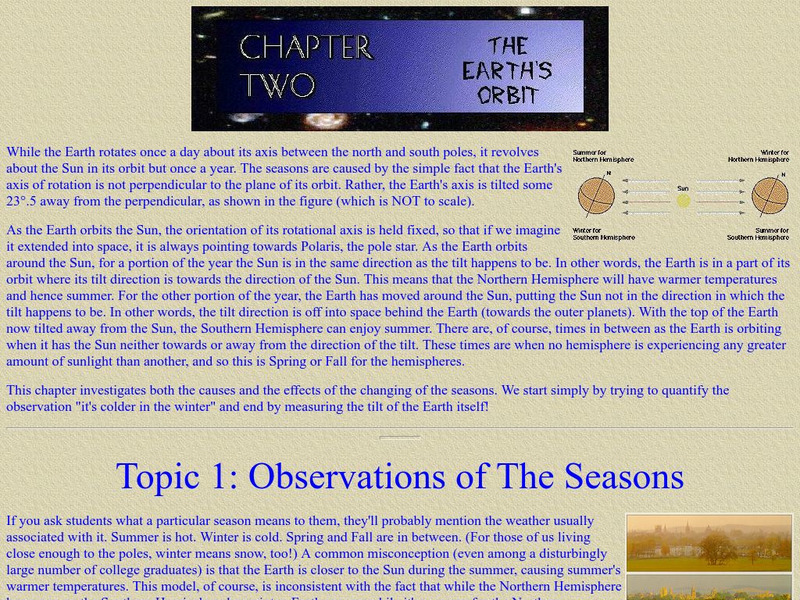Read Works
Read Works: Sunrise, Sunset, or Not?
[Free Registration/Login Required] An informational text about what causes the sunrise and sunset. A question sheet is available to help students build skills in reading comprehension.
Math Is Fun
Math Is Fun: Sun Clock
The mathematics resource discusses the sun clock. Students review the concept using the provided notes and then answer questions to check for comprehension of the topic.
Harvard University
Eyes on the Sky, Feet on the Ground: The Earth's Orbit
Students perform many inquiry activities related to Earth's orbit. Included are recording daily temperatures, observing the sun's path over several weeks, tracking sunrise and sunset times, and angle of sunlight. Diagrams make lessons...
Other
Atmospheric Optics
Instead of just ooohing and aaahing over that beautiful sunset, impress your loved ones with an insightful and informed explanation of just what makes sunsets so interesting, and they will oooh and aaah at you too! At this site, you'll...
Read Works
Read Works: Sunrise, Sunset
[Free Registration/Login Required] An informational about days being longer in the summer and shorter in the winter. A question sheet is available to help students build skills in reading comprehension.
E-learning for Kids
E Learning for Kids: Science: France: What Makes Day and Night?
Papa and his son Pierre work at a grape farm. Pierre loves to go out and play as soon as the sun comes up. What do you know about the sun and the Earth?
Alabama Learning Exchange
Alex: Sun, Earth, and Moon: Calendar of Events
During this lesson learners are going to take a look at moon phases and sunrise-sunset times in order to learn about daylight hours. Students discover that we do not always have the same amount of daylight each day. This lesson is best...
US Navy
Astronomical Applications Department: Complete Sun and Moon Data for One Day
You can obtain the times of sunrise, sunset, moonrise, moonset, transits of the Sun and Moon, and the beginning and end of civil twilight, along with information on the Moon's phase by specifying the date and location in one of the two...
Science and Mathematics Initiative for Learning Enhancement (SMILE)
Smile: Models of the Earth and Moon
This lesson plan from the Illinois Institute of Technology demonstrates the causes of; day and night, seasons, and phases of the moon.With a few items, you help the elementary student discover why these phenomena occur.
Synopsys
Synopsys: A Gentle Intro to Optical Design: Why Is the Sky Blue?
Discusses Rayleigh scattering in plain language and attributes the blueness of the skies to this phenomenon. Discussion of scattering is just one topic of many on this lengthy page of optical topics.
Math Is Fun
Math Is Fun: Days, Weeks, Months, and Years
Simple explanation of what makes up a day, a week, a month, and a year.
Curated OER
Snaith Primary School: Settings: Sunset
A painting of a sunset over silhouettes of trees and a large rock by Tony Newlin.
Curated OER
Science Kids: Science Images: Sunset
This photo shows a glorious sunset at the waters edge of a beautiful beach. The sun is fast dropping behind the clouds and beyond the horizon.













